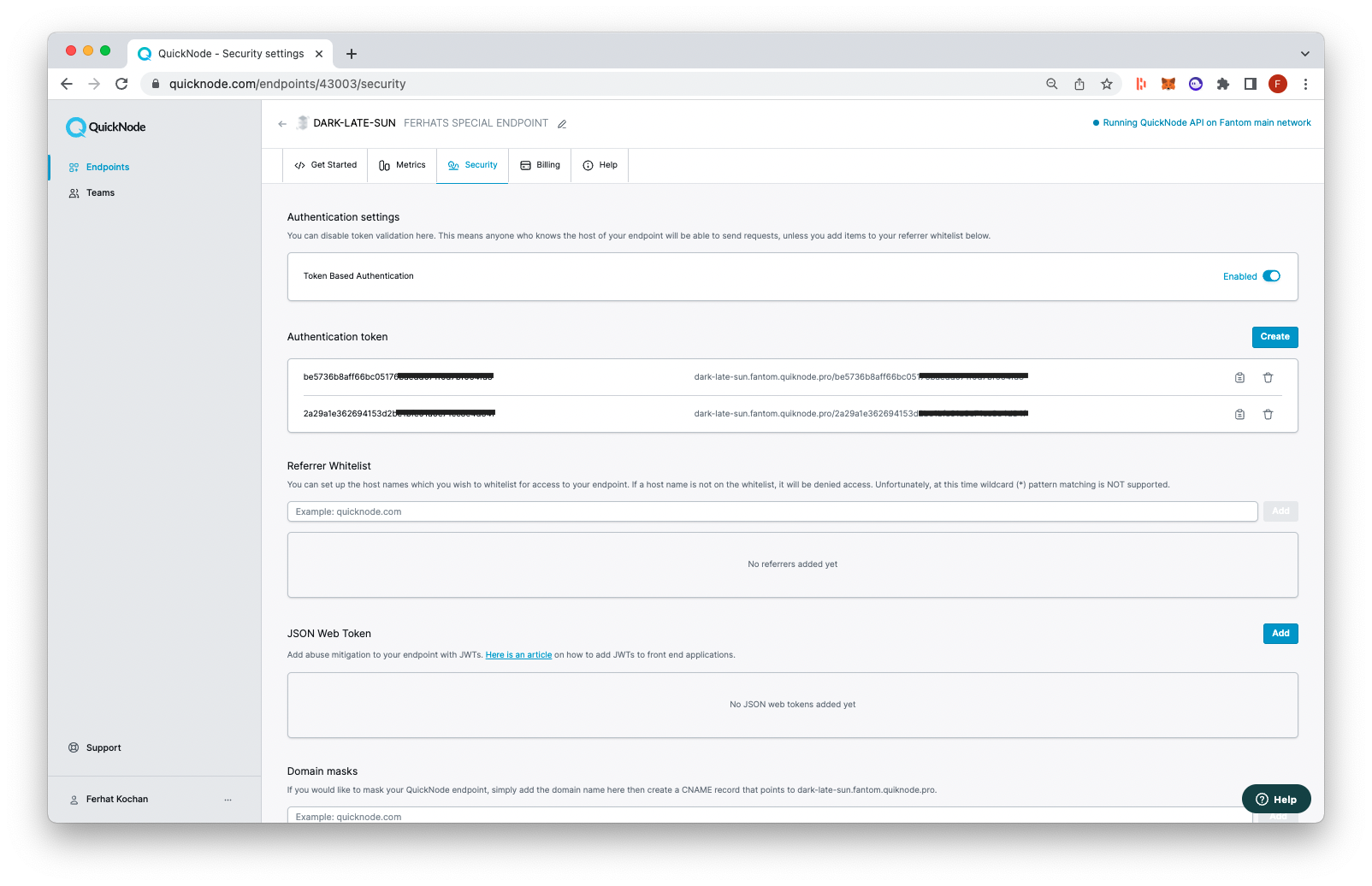2 min read
What is Multi-Token Authentication?
Security is an important part of developing a resilient Web3 application. If the security of your blockchain infrastructure is compromised, it can lead to downtime for your users. We here at Quicknode recently released a new update to our security features available on our blockchain endpoints.
Previously, if you wanted to create multiple authentication tokens for one of your Quicknode endpoints, you would need to boot up multiple blockchain nodes (which can be hard to manage). Now, Quicknode offers developers the ability to create multiple authentication tokens for a single blockchain endpoint!
Multi-Token Authentication Use Cases
The ability to create multiple authentication tokens allows developers to have different authentication tokens for each of their dApps without having to run multiple blockchain nodes. Additionally, this will enable you to revoke an individual token that may have been compromised without having to update the non-compromised tokens.
Multi-Token Authentication Walkthrough
Creating multiple authentication tokens for a single blockchain endpoint is quite simple. Head over to one of your active blockchain nodes on the Quicknode endpoints page and go to the Security tab. If you don't have an account, you can sign up for a free Quicknode account here.
You can click the Create button under the Authentication token section to create additional authentication tokens.

Other Authentication Options on Quicknode
Quicknode is SOC-2 compliant and uses the best-in-class frameworks and software to ensure our web application is safe and secure. Here are some additional authentication features we offer across all of our blockchain nodes:
- Token-Based Authentication (with the ability to create multiple authentication tokens)
- JWT (JSON Web Tokens)
- Referrer Whitelist (set up the hostnames which you wish to whitelist for access to your endpoint)
- Domain Masking
Conclusion
That's a wrap! If you're new to Web3 development, check out our Guides page for a variety of Web3 development topics. Subscribe to our newsletter for more articles and guides. If you have any feedback, feel free to reach out to us via Twitter. You can always chat with us on our Discord community server, featuring some of the coolest developers you’ll ever meet :)